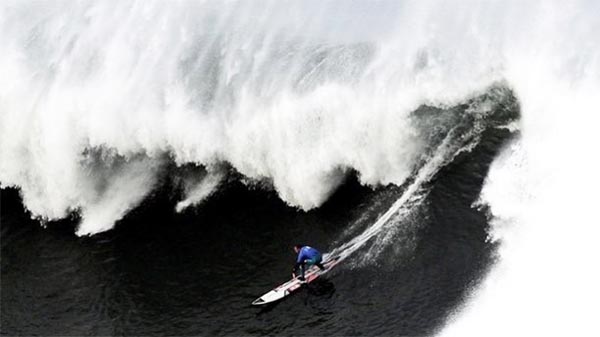
Damn Cotty, way to send it! Unfortunately, as that avalanche of whitewash consumed Andrew Cotton during the Punta Galea Challenge in the Basque Country in December of 2018, it did some pretty serious damage and ultimately sidelined him for awhile. The poor guy, just months recovered from a vertebral fracture and having an awesome big wave season so far, and he suffers another season ender – a complete tear of his right anterior cruciate ligament, or ‘ACL’. ACL injuries, we hear about them all the time, right? That’s because injuries to the ACL are actually one of the most common types of knee injuries. The mechanism of injury is pretty straightforward, so I thought this would be an interesting example to use to explain how it all goes down.
Sorry, but a little anatomy first. Three bones join at the knee: the femur (thigh bone), the patella (kneecap), and the tibia (or shin bone). Four ligaments within the joint provide stability to the knee: the anterior and posterior cruciate ligaments (ACL and PCL), and the medial and lateral collateral ligaments (MCL and LCL).
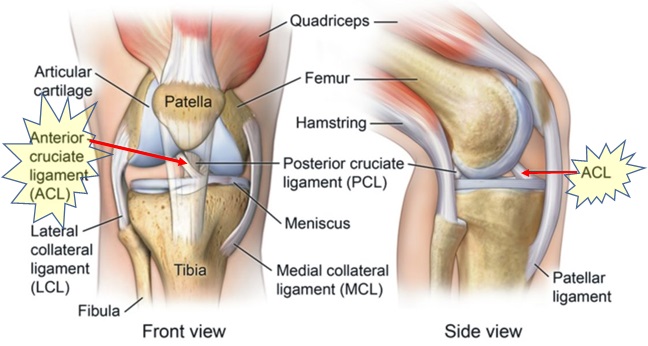
The one that Cotty injured, the ACL, extends from the femur to the front of the surface on the top of the tibia (the tibial plateau). This arrangement allows the ACL to prevent forward motion of the tibia relative to the femur (referred to as ‘anterior drawer’). The cross-sectional shape of the ACL looks like a really thick shoelace, or maybe a nice and thick flat noodle. Its not circular, and it is wider than it is round, make sense? Overall length is typically about an inch and half (3.8 cm) or less. Think of ligaments as small ropes that have a little bit of stretch to them. With that in mind, its pretty simple: ligaments get injured when they are subjected to forces that exceed their physiological limits. In other words, they fail when they are pulled or twisted too much. As a reference, you could hang about 300 to 400 lbs of weight from an ACL before it would be expected to fail. That’s a pretty strong noodle!
Injury to the ACL can happen in a variety of ways. Most notably, if the lower leg is pushed too far forward relative to the upper leg, for one reason or another. Another way is from rotation and/or inward bending of the knee. These mechanisms can happen with or without external forces. By that I mean that most people suffer ACL tears without 15 to 20 foot waves crashing on them, or 300 lb football players tackling them. For this reason, ACL injuries are often referred to as ‘non-contact’ injuries due to their propensity to occur in sporting activities that require rapid changes in direction, acceleration, and deceleration.
If non-contact injuries exist, then this has to be the opposite of that. I’ve watched that video so many times that using the word ‘contact’ to describe the scenario Cotty found himself seems careless and borderline offensive! Cotty told the BBC, “I don’t think people understand the force of being hit by that amount of water. It’s like being hit by a lorry (a big truck), and you can’t train for that.” Were talking abut a guy who broke his back last year and just destroyed his knee a couple weeks ago, so he’s got perspective. It’s a disturbing thought, but unfortunately, he isn’t too far off. Those are the kinds of injuries people get when they are hit by cars. Were not talking about low speed impacts either. Consider this – the chance of serious knee injury like Cotty suffered jump from about 25% to well over 50% when impact speeds exceed 20 mph (32 km/h). A bit more gruesome a though – the odds of survival, yeah like life and death, are less than 50% when impact speeds get a bit higher, like 30 mph (48 km/h) or more. Pretty bad odds! This isn’t meant to be a direct comparison, but it does give a bit more perspective of what these athletes subject themselves to.
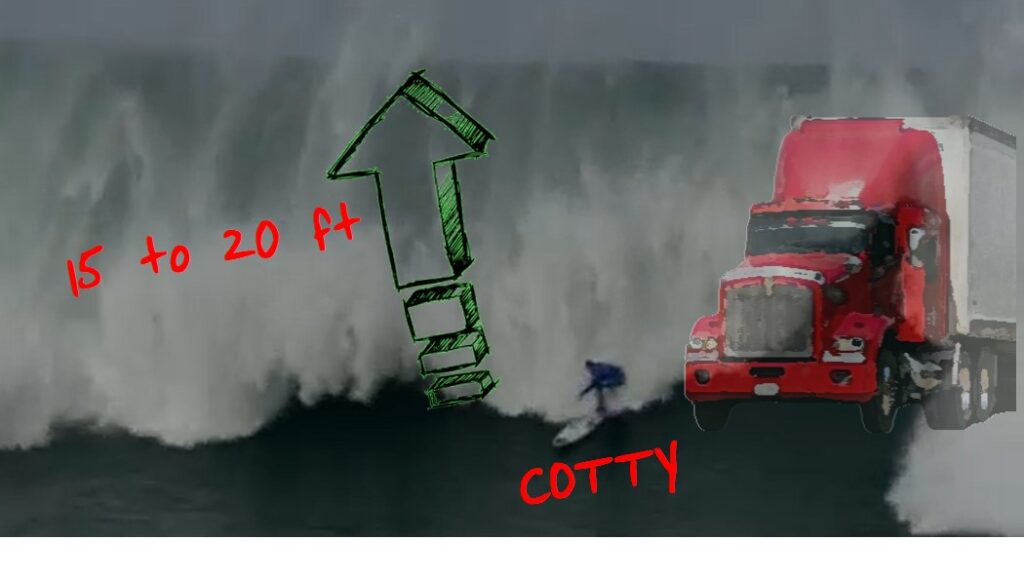
I reached out to Cotty to ask him about what he remembered from the fall. He said, “As the wave crumbled I straightened out to go around the section, as I put the weight on my front foot to gain speed the force of the wave landed on my back and right leg.” Gotta give it to him, Cotty was way more succinct than I am being. It all makes sense though right? The wave begins crashing and initially contacts the outside and back of his trailing right leg. Not much is clear after that, but his injuries tell the story. The weight of the wave forced his knee inward (valgus bending) while also pushing his lower leg forward. These are the ingredients for an ACL tear. To be honest, I was shocked that was all that happened but when I asked he confirmed that he also suffered a severe sprain/strain to his right MCL. That’s the one on the inside of the knee which limits inward bending. Bottom line: you just need to know where stuff is located to understand why and when it breaks!
Sorry if this one touched a nerve Cotty! I really appreciate you opening up about the injury and contributing to the piece. Rest up and get better man. I have no doubt you’ll be out there charging again soon, probably a bit sooner than recommend 😉
I hope this was informative and not too boring. I work in forensics and my role is basically to understand and describe how, when, and why injuries occur. Most days I’m looking at people in car accidents, or slip, trip, and falls. We have been studying how people get injured in those environments for a long time now, so much of it is pretty well understood. I’m interested in applying that research and understanding to different environments that we may not know as much about, like big wave surfing. I guess my ultimate goal is to try to keep everyone awake by using unique and interesting scenarios like this one, to explain relatively basic injury mechanisms. Thank you for reading, your time and consideration are very much appreciated.
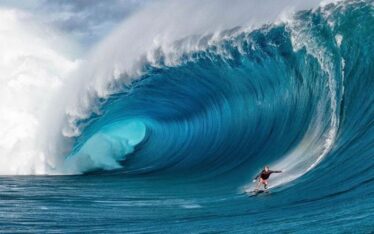
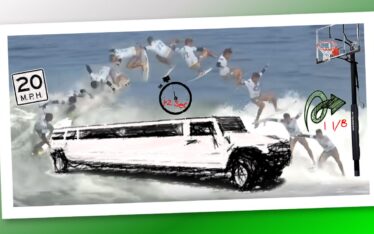
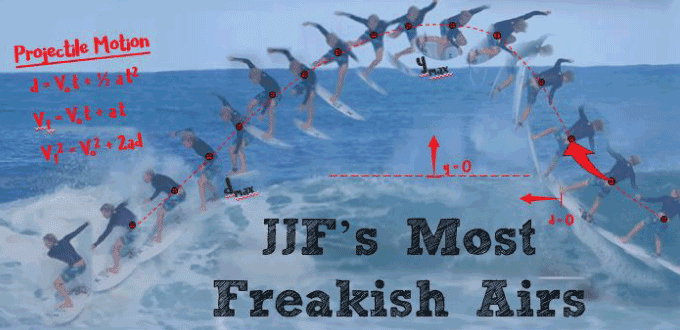
About The Author
Michael Sinnott
My background is in Biomechanics and Engineering. I work in Forensics, so I'm the guy that gets called to figure out what happened and why. I own BioLogic Forensics LLC, and offer forensic services out of Oahu, Hawaii. I love what I do and am passionate about people. Work related or not, I'm always investigating something. Whether I'm working or surfing or diving or fishing, I'm proud to share my stories. After all, I'm just a kid from suburban Detroit living out his dreams in Hawaii!